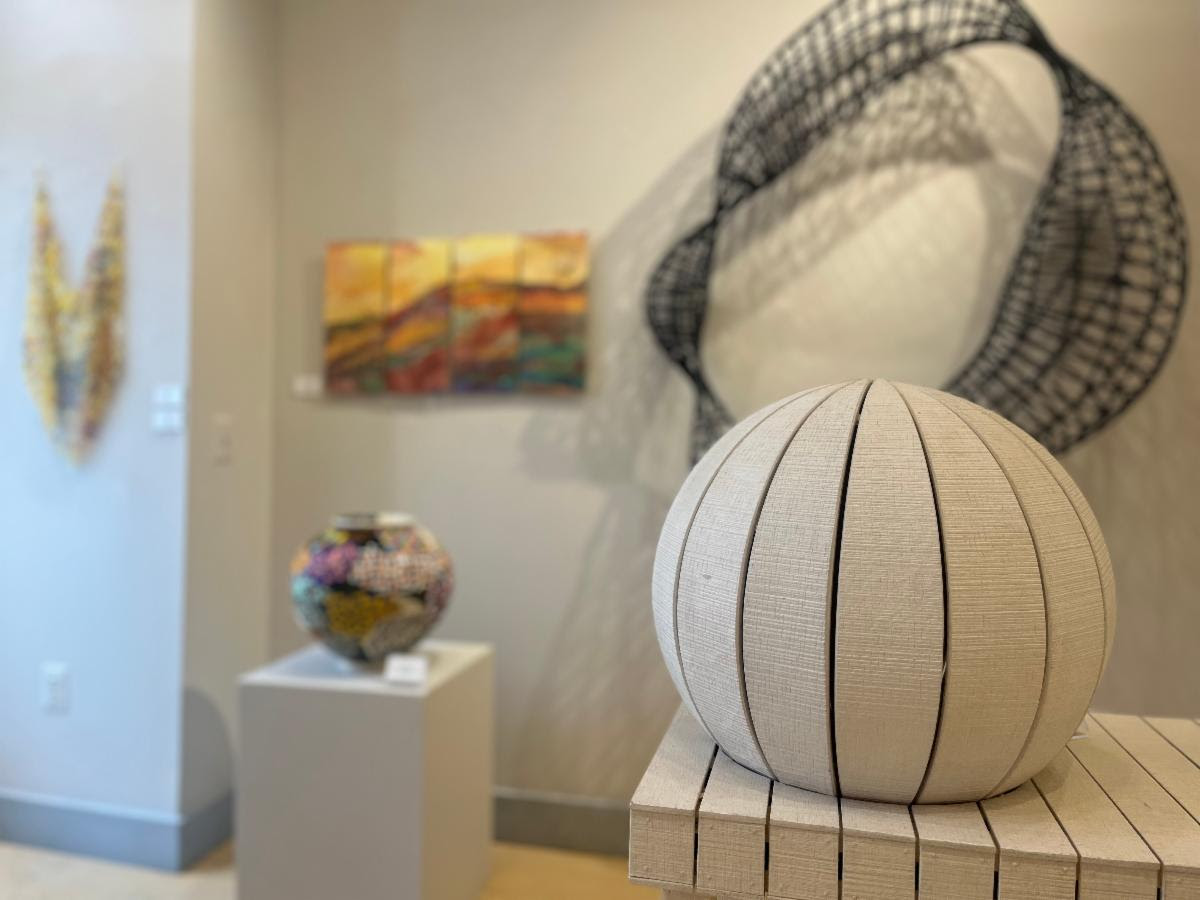| 8405 Germantown Ave, Historic Chestnut Hill, PA 19118
215.247.1603 www.graverslanegallery.com |
| Patterns
April 15th – June 17th 2023 |
 |
| Patterns.
1. repeated decorative design.
2. an arrangement or sequence regularly found in comparable objects.
3. a regular and intelligible form or sequence discernible in certain actions or situations.
4. a model or design used as a guide in needlework and other crafts.
Noun/plural noun : ornamentation, motif, design, marking.
Verb/3rd person present: embellished, tessellated, fashion, affect, determine
A casual word, Patterns has endless definitions with over 176 related synonyms. Patterns have endless permutations and are applicable in understanding creation, creativity, fertilization, structural & biological engineering, weather, DNA, energy, building, baking, genealogy etc… the list is endless. Basically every single action, structure, behavior, language, material, and artistic expression is coded rooted in patterns.
Patterns is currently on view at Gravers Lane Gallery. The show explores how we visually respond to structure, and how underlying patterns fuel our actions, and reactions. The Artists represented rely on repetitive mark making, creating structural supports, color relationships, textural surfaces and more to create their vocabulary. These structural links – executed in glass, aluminum, paper, gut, bronze, wood, ceramics (to name a few mediums), all support the theme of the exhibition.
|
|
Polly Barton
Pamela Becker
Karin Birch
Lanny Bergner
Yvonne Bobrowicz
Ruth Borgenicht
Eileen Braun
Marcia Docter
Pat Hickman
June Lee
David Licata
Don Miller
Debora Muhl
Leslie Pontz
Mary Roehm
Barbara Lee Smith
Barbara Straussberg
|
| PAT HICKMAN
Light Passage, fiber, 8’3”x40”x2”, 1995
Currently on view in Patterns curated by Bruce Hoffman, Chloë Le Pichon, Joseph Miceli @ GLG courtesy of Graver’s Lane Gallery |
|
| Left: Ruth Borgenicht, Linear Chain Links, aluminum. Woven Horizon, stoneware. Right: Barbara Lee Smith, Light’s Web, mixed material, painted, fused, machine quilted. |
|
|
SPRING ON SOMETHING FUN !
|
|
Carolyn Chester (née McFadden) was born March 1, 1934 in Butte, Montana. In 1972, while the family was on sabbatical in Sussex, England, she became interested in the artwork of an influential group of British and Northern European ceramists: Lucie Rie, Bernard Leach, Hans Coper, Ruth Duckworth and Ian Godfrey. Back in Ithaca, she studied ceramics at Alfred College and, together with her husband, built a pottery studio in the basement of their home. She decided early on to work exclusively in porcelain, using glazes and clay she made herself. The creation of each piece was time-consuming, labor-intensive and exacting. First she would throw the piece on the wheel, and after it had partially dried she would slowly rotate it, using hand-held tools to shape and sculpt it before it was eventually fired in an electric kiln, then sanded, glazed and fired again. She focused on simple, elegant lines and clarity of form, combined with a restrained but captivating use of color. Achieving exceptional color preoccupied her and she experimented with different glaze recipes for years, making many subtle adjustments, seeking assistance from her husband and from Cornell’s libraries before obtaining acceptable results. She was a fierce perfectionist and there were many more so-called failures than successful pieces.
|
|
|
In the early years she created tall slender vases, elegant, open bowls and “tulip bowls” with high rims on graceful pedestals. In the 1990’s and early 2000’s she began making more deliberately sculptural work that sometimes subtly or whimsically evoked human and animal forms. She chose titles that alluded to mythology or modern literature and reflected her own keen interest in and inspiration from other art forms: one sculptural piece she called “Beowulf, after Seamus Heaney;” one with several independently standing slender forms in a boxlike silhouette she titled “Figures in the Void, for Samuel Beckett.” Her husband was a key collaborator throughout her career as an artist; during this period he constructed the frames and platforms for the sculptural works or helped assemble complicated multi-part pieces. Later she used gold and silver leaf to create richly luminous works such as “The Entrance of the Queen of Sheba.” Slowly, as her health and mobility declined, she moved away from porcelain and began working in collage using paper, porcelain, and other media, although she continued to assemble and gild ceramic pieces. She continued working right up until her last hospitalization. Carolyn passed away on November 14th, 2015.
Her work has been exhibited in galleries and competitions, is part of the permanent collection of several museums, and has been featured in scholarly books about fine porcelain.
Visit us to admire Carolyn Chester’s masterful creations @GLG. Her works are on view, and available for sale. Please inquire.
|
|
| Carolyn Chester, #19 high footed chalice (unfinished foot) blue interior, porcelain and glaze, 5″H. |
|
Come on in, and visit us!
We enjoy your presence and your company
Tuesdays-Saturdays 11am-5pm
|
|
|
|
|